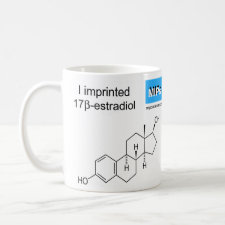
Authors: Le Noir M, Lepeuple AS, Guieysse B, Mattiasson B
Article Title: Selective removal of 17β-estradiol at trace concentration using a molecularly imprinted polymer.
Publication date: 2007
Journal: Water Research
Volume: 41
Issue: (12)
Page numbers: 2825-2831.
DOI: 10.1016/j.watres.2007.03.023
Alternative URL: http://www.sciencedirect.com/science/article/B6V73-4NM5S37-3/2/21d6204475f5405b2f7391dd31a2a85c
Abstract: A molecularly imprinted polymer (MIP) was synthesized with 17β-estradiol (E2) as template. It was then capable to recover this compound by 100 ± -0.6% from a 2 μg/L aqueous solution. By comparison, E2 recoveries of 77 ± 5.2%, 87.1 ± 2.3% and 19.1 ± 7.8%, were achieved using a non-imprinted polymer (NIP) synthesized under the same conditions (but without template), a commercial C18 extraction phase and granular-activated carbon (GAC), respectively. When fluoxetine hydrochloride and acenaphthene were added as interferences to the aqueous solution at 2 μg/L each, E2 was recovered by 95.5 ± 4.0% from the MIP, compared to 54.5 ± -9.4%, 76.0 ± 2% and 14.3 ± 0.1% from the NIP, C18 and GAC phases, respectively. Estrogenic activity equivalent to the effect caused by 22.4 ng E2/L was recorded in the MIP extract from a wastewater sample whereas no activity was detected in the NIP extract. This suggested the imprinted polymers removed estrogenic compounds. This study therefore demonstrates the potential of MIPs for the selective removal of endocrine-disrupting compounds. By using a synthetic analogue to natural hormone receptors, adsorption is based on the same property that makes the contaminants harmful. Biological treatment of enriched E2 was also demonstrated
Template and target information: 17β-estradiol, E2
Author keywords: Endocrine disrupter, Estrogen, molecular imprinting, Trace contaminant, Yeast estrogen screen



Join the Society for Molecular Imprinting

New items RSS feed
Sign-up for e-mail updates:
Choose between receiving an occasional newsletter or more frequent e-mail alerts.
Click here to go to the sign-up page.
Is your name elemental or peptidic? Enter your name and find out by clicking either of the buttons below!
Other products you may like:
 MIPdatabase
MIPdatabase









